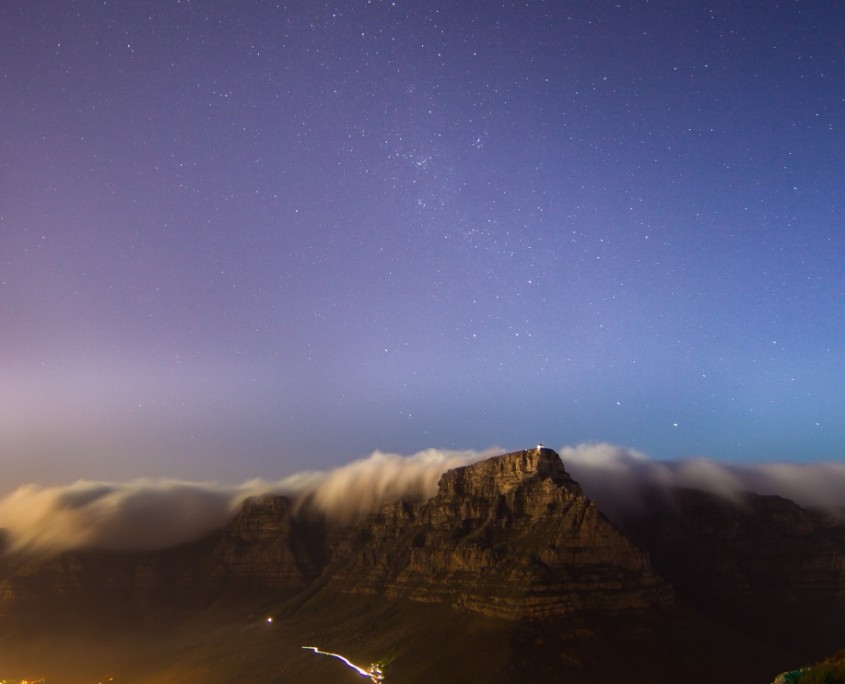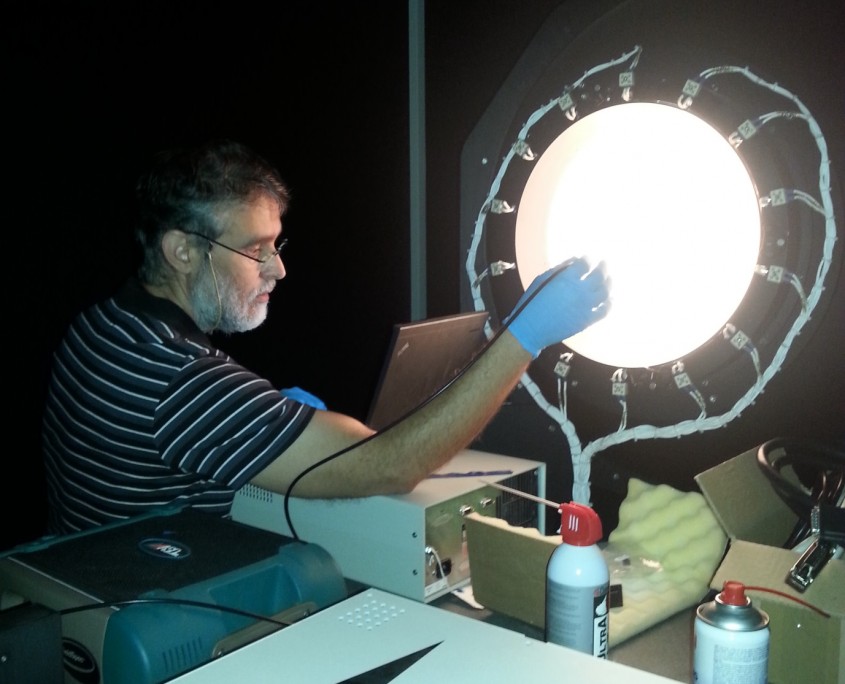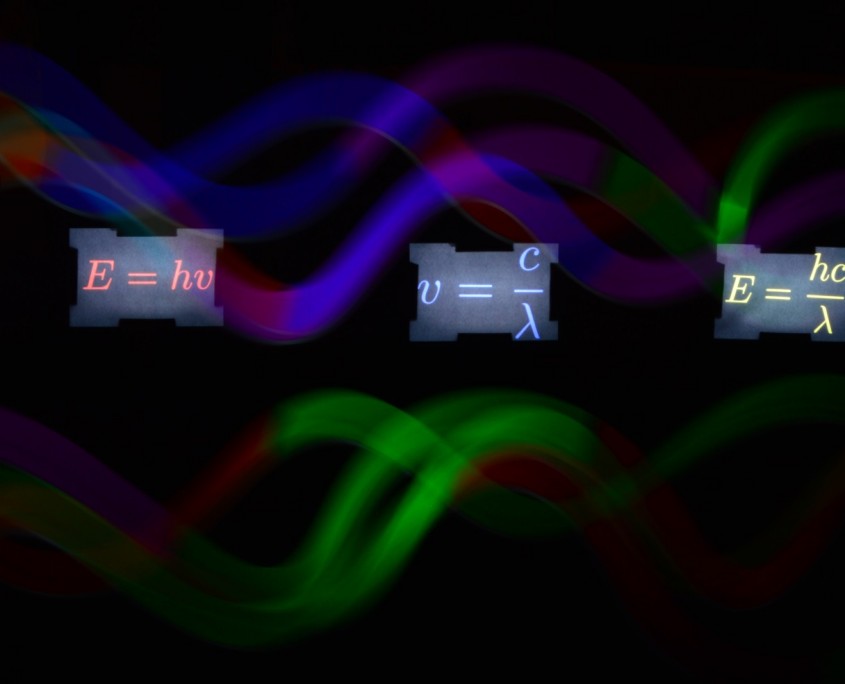Winner
Photographer: Morgan Trimble
Title: Light at Night – Natural and Man-made
This photo uses both natural light, in the form of stars, and man-made light from the city lights of Cape Town to illustrate the dichotomy and harmony between astronomy and light-based technology. Astronomy has been the driver of much development in light-based technologies, from telescopes to sophisticated light collecting sensors and advanced engineering to study the faintest light signals from far-away galaxies. Manmade light in the image, consisting of a streak of vehicle headlights along Tafelberg Road; street, house, and building lights of the city; and a beacon atop Table Mountain, illustrate the progress in controlling light to visualize our world—for safety, security, and comfort. Different colors and intensities represent different light emitting technologies, from the traditional incandescent and fluorescent bulbs, to neon lights, to the latest light emitting diodes (LEDs). You can even see the light pollution over the city in the form of a faint red glow in the sky. Perhaps a few people in Cape Town are using their lights to read about astronomy on this particular evening.
Special Mentions
Photographer: Emma Lewis Bone
Title: Integrating Light and Science
This image features optical systems analyst Derek Griffith measuring the light field within an integrating sphere at the CSIR-DPSS unit in Pretoria on the 12th May 2015. He is observed recording the spectral radiance with the fibre optic cable of an ASD FieldSpec 4 spectroradiometer. An integrating sphere is an optical component comprising a hollow sphere with small entrance and exit ports, lined by a characteristic white, highly reflective, diffuse coating. When a lighting device is placed within an integrating sphere the luminous flux uniformly illuminates the inside surface through a series of multiple diffuse reflections. The amount of light emitted by such a device will be determined relative to a known source. A section of my multi-disciplinary PhD involves the absolute radiometric calibration of a multi-excitation fluorometer (MFL), an oceanographic device used to provide information on the light-harvesting characteristics of resident phytoplankton. The MFL operates through nine different excitation LEDs and the integrating sphere was used to determine the absolute radiometric output of the individual diodes. This information will be used to derive key information pertaining to phytoplankton physiology, with the ultimate goal of better understanding the complex dynamics of Southern Ocean species and their impact on the global carbon cycle.
Photographer: Michelle Low
Title: Discovering Light
Light diffracts and it interferes, and therefore behaves like a wave. Light is a type of an electromagnetic wave and at the same time it is a flow of particles, which is also known as photons. Electrons released from a surface when light is shone on it is known as the photoelectric effect. Einstein wrote that light that is made up of photons, known as a packets of energy and that the energy of the light is proportional to frequency radiation multiplied by Planck’s constant. This research (which won a Nobel prize over 100 years ago) laid a foundation for many of today’s applications found in modern technology. This shows one that research and fundamentally light, plays an important role today and possibly in the future. However, there are unanswered questions about the interesting characteristics of light, such as it being a particle but that which has no mass. There is no doubt that there are prospects for research to add value to the unknown variables. When you look at your mobile phone, there is a history of research that contributed to its development. Research is like a colourful wave of knowledge, shedding light where it is needed.
Copyright Notice
These SA Science Lens images are protected by copyright. Should anyone wish to use these images, please contact SAASTA at sciencelens@saasta.ac.za.




 The South Africa Agency for Science and Technology Advancement (SAASTA) is a business unit of the
The South Africa Agency for Science and Technology Advancement (SAASTA) is a business unit of the